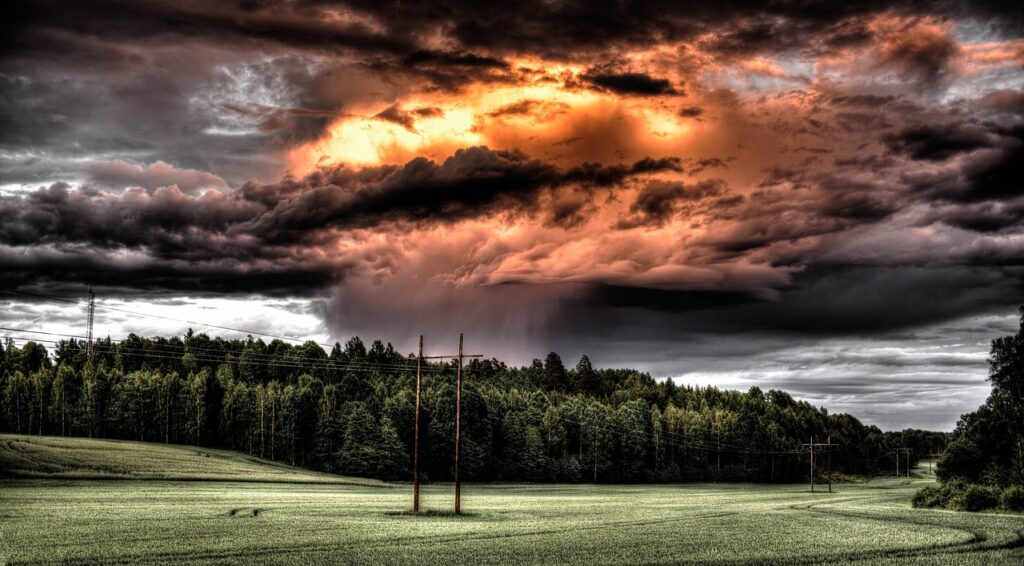Introduction
Hello! We give you an expansion and a focus on a specific part first.
EXAMPLE:
let’s bring it to life!
Let’s add an example to bring the introduction to life and make it more relatable for your readers.
Our Introduction “Example“
Are you ready to transform how you connect with your audience and grow your business? Building a lead-generating funnel is the cornerstone of modern marketing, and the best part is—you don’t need to be an expert to get started.
A lead-generating funnel is like a roadmap that guides potential customers from curiosity to conversion. Imagine this: You’re a small business owner selling eco-friendly skincare products. You create a free downloadable guide, “5 Secrets to Healthier Skin Naturally.” Visitors see your ad on social media, click the link, and land on your page offering the free guide in exchange for their email address.
Once they download the guide, they enter your email sequence where they receive helpful tips and product recommendations over a few days. By the time they’re ready to purchase, they feel confident in your expertise and trust your brand. This is the magic of a lead-generating funnel—it works behind the scenes to nurture leads and turn them into loyal customers.
At waytofunnel.com, our mission is to make funnel-building approachable and effective for everyone, no matter your level of experience. In this guide, we’ll break down everything you need to know—from the basics of creating your first funnel to the top tools that simplify the process. Plus, we’ll help you sidestep common mistakes that often trip up beginners.
By the end of this post, you’ll not only understand how to build a lead-generating funnel from scratch, but you’ll also feel inspired to take that first step toward growing your business. Let’s dive in and start building your path to success!
Great! Let’s move into the Step-by-Step Guide: Building a Funnel from Scratch section to provide actionable steps your audience can follow.
Step-by-Step Guide: Building a Funnel from Scratch
Creating a lead-generating funnel might sound complicated, but breaking it into manageable steps makes it much easier. Here’s a simple, beginner-friendly process to help you get started:
1. Define Your Target Audience
Your funnel’s success begins with understanding who you’re trying to reach. Ask yourself:
• Who is my ideal customer?
• What problem are they trying to solve?
• What motivates them to take action?
For example, if you’re targeting eco-conscious consumers, your messaging should focus on sustainability and the benefits of natural products.
2. Craft a Clear and Irresistible Offer
The key to attracting leads is creating an offer they can’t resist. This could be:
• A free eBook or guide.
• An exclusive discount or coupon.
• Access to a free webinar or mini-course.
Your offer should provide value and solve a small but specific problem for your audience. Remember, this is your first impression—make it count!
3. Set Up a High-Converting Landing Page
Your landing page is where the magic happens. It’s the gateway to your funnel, and its goal is simple: convert visitors into leads. Key elements of a successful landing page include:
• A compelling headline.
• A clear description of your offer.
• Eye-catching visuals.
• A strong call-to-action (CTA), like “Download Now” or “Get My Discount.”
Pro Tip: Use tools like Systeme or ClickFunnels to create professional-looking landing pages without needing design skills.
4. Build an Email Sequence to Nurture Leads
Once someone enters your funnel, it’s time to build trust and guide them toward making a purchase. Create an email sequence that:
• Welcomes them and delivers your offer.
• Provides additional value through tips, resources, or stories.
• Highlights your products/services as the solution to their problem.
For example, your sequence could include 3-5 emails spaced over a week. Use tools like Aweber or Mailchimp to automate this process.
5. Drive Traffic to Your Funnel
Your funnel can’t work without traffic. Use these methods to attract visitors:
• Social Media Ads: Platforms like Facebook and Instagram are great for targeting specific audiences.
• Content Marketing: Create blog posts, videos, or infographics that lead back to your funnel.
• SEO Optimization: Ensure your website and content rank well on search engines for relevant keywords.
6. Analyze and Optimize Your Funnel
The work doesn’t stop after your funnel is live. Regularly review its performance and identify areas for improvement. Use analytics tools to track:
• Conversion rates on your landing page.
• Open and click-through rates for your emails.
• ROI on your ad campaigns.
Experiment with changes like tweaking headlines, adjusting your offer, or simplifying your email sequence to improve results.
By following these steps, you’ll create a funnel that not only attracts leads but also builds lasting connections with your audience.
So Let’s add visuals and dive into the Top 10 Funnel-Building Tools next.
Ok! Here’s how we can add value to your blog with both visuals and the Top 10 Funnel-Building Tools section.
Step-by-Step Guide: Visual Suggestions
Including visuals makes your blog more engaging and easier to follow. Here are some ideas:
1. Infographics: Create a flowchart of a simple funnel process (e.g., Traffic → Landing Page → Email Sequence → Purchase).
2. Screenshots: Use images of landing pages, email templates, or analytics dashboards to demonstrate tools in action.
3. Icons or Diagrams: Represent key steps like “Crafting an Offer” or “Driving Traffic” with icons for clarity.
4. Examples in Context: Include mockup examples of landing pages or email sequences targeting different niches (e.g., skincare, fitness, tech).
Top 10 Funnel-Building Tools You Need to Know
Building a funnel is much easier with the right tools. Here are 10 beginner-friendly platforms to get started:
• A popular all-in-one platform for creating landing pages, email sequences, and more.
• Best For: Beginners who want a simple, drag-and-drop solution.
• Why You’ll Love It: Pre-designed templates and integrations make setup fast.
• Focused on high-converting landing pages with easy customization.
• Best For: Driving traffic to your offer.
• Why You’ll Love It: Affordable and optimized for mobile users.
3. ActiveCampaign
• Combines email marketing with automation tools.
• Best For: Nurturing leads and tracking engagement.
• Why You’ll Love It: Advanced features like behavioral targeting.
• A beginner-friendly email marketing platform with free plans.
• Best For: Small businesses starting with email funnels.
• Why You’ll Love It: Easy to use with built-in analytics.
• A budget-friendly all-in-one tool for creating funnels and managing marketing.
• Best For: Entrepreneurs on a tight budget.
• Why You’ll Love It: Simple interface and no additional software required.
• A complete business platform for funnels, email campaigns, and more.
• Best For: Businesses ready to scale.
• Why You’ll Love It: Centralized data management.
7. HubSpot
• A robust CRM with funnel-building and marketing automation tools.
• Best For: Beginners needing a CRM integrated with their funnel.
• Why You’ll Love It: Free tools with plenty of growth options.
8. Unbounce
• Specializes in creating high-performing landing pages.
• Best For: A/B testing and increasing conversions.
• Why You’ll Love It: AI features for page design.
9. Thrive Suite
WordPress plugins for building funnels directly on your website.
• Best For: Bloggers and WordPress users.
• Why You’ll Love It: Seamlessly integrates with WordPress.
10. Google Analytics
• Essential for tracking funnel performance and visitor behavior.
• Best For: Analyzing and optimizing funnels.
• Why You’ll Love It: Free and packed with powerful insights.
Visual Suggestions for Tools Section
1. Icons or Logos: Display the logos of tools like ClickFunnels or Mailchimp to create brand recognition.
2. Screenshots: Highlight tool dashboards or templates (e.g., a ClickFunnels landing page).
3. Comparison Chart: Add a table comparing features like pricing, ease of use, and key benefits.
Common Funnel Mistakes and How to Avoid Them
Even the best-intentioned funnels can fail if you fall into common traps. Here are some of the most frequent mistakes beginners make and actionable tips to avoid them:
1. Failing to Understand Your Audience
The Mistake: Creating a generic funnel that doesn’t resonate with your target audience.
Why It Happens: Lack of research into your audience’s needs, pain points, and motivations.
How to Avoid It:
• Use tools like Google Surveys or AnswerThePublic to gather insights.
• Create a detailed customer persona that outlines their demographics, challenges, and goals.
• Tailor your funnel messaging to speak directly to your ideal customer.
2. Overcomplicating the Funnel
The Mistake: Adding too many steps, offers, or distractions that confuse potential leads.
Why It Happens: Trying to include every feature or strategy you’ve learned about.
How to Avoid It:
• Start simple: focus on one offer, one landing page, and one email sequence.
• Use clear and concise messaging at every stage of your funnel.
• Test and refine your funnel before expanding it with additional features.
3. Neglecting Mobile Optimization
The Mistake: Ignoring how your funnel performs on mobile devices.
Why It Happens: Prioritizing desktop design and forgetting the growing number of mobile users.
How to Avoid It:
• Use mobile-friendly funnel builders like Leadpages or Unbounce.
• Preview and test your funnel on multiple devices.
• Simplify forms and ensure your CTAs are easily clickable on smaller screens.
4. Weak Call-to-Actions (CTAs)
The Mistake: Using vague or uninspiring CTAs that fail to prompt action.
Why It Happens: Overlooking the importance of a clear and persuasive CTA.
How to Avoid It:
• Use actionable language like “Download Now,” “Claim Your Discount,” or “Start Your Free Trial.”
• Make your CTAs stand out visually with contrasting colors and bold text.
• Test different CTA placements to see what converts best.
5. Skipping Follow-Up Emails
The Mistake: Capturing leads but failing to nurture them with follow-up communication.
Why It Happens: Assuming leads will take action without additional encouragement.
How to Avoid It:
• Create a series of automated emails that provide value and build trust.
• Use tools like AWEBER for automation.
• Include educational content, testimonials, and special offers in your follow-ups.
6. Ignoring Funnel Analytics
The Mistake: Launching your funnel and not tracking its performance.
Why It Happens: A lack of knowledge about analytics tools or what to measure.
How to Avoid It:
• Use platforms like Google Analytics or ClickFunnels Insights to monitor metrics.
• Focus on key performance indicators (KPIs) like conversion rates, email open rates, and ROI.
• Regularly review your data and make adjustments to improve performance.
7. Forgetting to Test and Optimize
The Mistake: Leaving your funnel unchanged after launch.
Why It Happens: Assuming your funnel will perform perfectly right out of the gate.
How to Avoid It:
• Run A/B tests on landing pages, email subject lines, and CTAs.
• Gather feedback from users to identify pain points or confusion.
• Continuously optimize your funnel based on performance data.
By avoiding these common mistakes, you’ll not only save time and effort but also increase your funnel’s effectiveness. Remember, even small tweaks can make a big difference in your results!
Creating a successful funnel doesn’t have to be overwhelming, even if you’re just starting out. Let’s recap the key points:
Step-by-Step Funnel Building
1. Identify your target audience and their needs.
2. Craft a compelling and valuable offer.
3. Design a high-converting landing page with a clear call-to-action.
4. Nurture your leads with automated email sequences.
5. Drive traffic using social media, content marketing, and SEO.
6. Analyze and optimize your funnel regularly for better results.
Top Tools for Funnel Success
Equip yourself with beginner-friendly tools like ClickFunnels, AWEBER, and Google Analytics to build and manage your funnel efficiently. Each tool serves a specific purpose, from landing page creation to email automation and performance tracking.
Avoid Common Mistakes
Steer clear of pitfalls like overcomplicating your funnel, neglecting mobile users, and skipping follow-up emails. Remember to test and optimize consistently to ensure your funnel stays effective over time.
By combining these steps, tools, and best practices, you’ll be well on your way to creating a lead-generating funnel that converts!
Conclusion: Your Funnel-Building Journey Awaits
Building your first funnel may seem like a daunting task, but with the right approach, it can transform your business. Start by understanding your audience, keep your funnel simple and focused, and use the tools and tips provided in this guide to streamline the process.
Remember, the key to a successful funnel isn’t perfection—it’s persistence. Test, learn, and refine as you go, and soon, you’ll have a system that not only generates leads but builds lasting relationships with your audience.
Your journey to funnel mastery starts now—take the first step, and let success follow.
Ready to Build Your Funnel? Let’s Get Started!
At WayToFunnel.com, we’re here to guide you every step of the way. Explore our resources, discover the best tools for your needs, and unlock strategies to take your funnel to the next level.
Read on for more on our blog. Do you have any requests? or go ahead and tell us what you would like us to add. 👇




